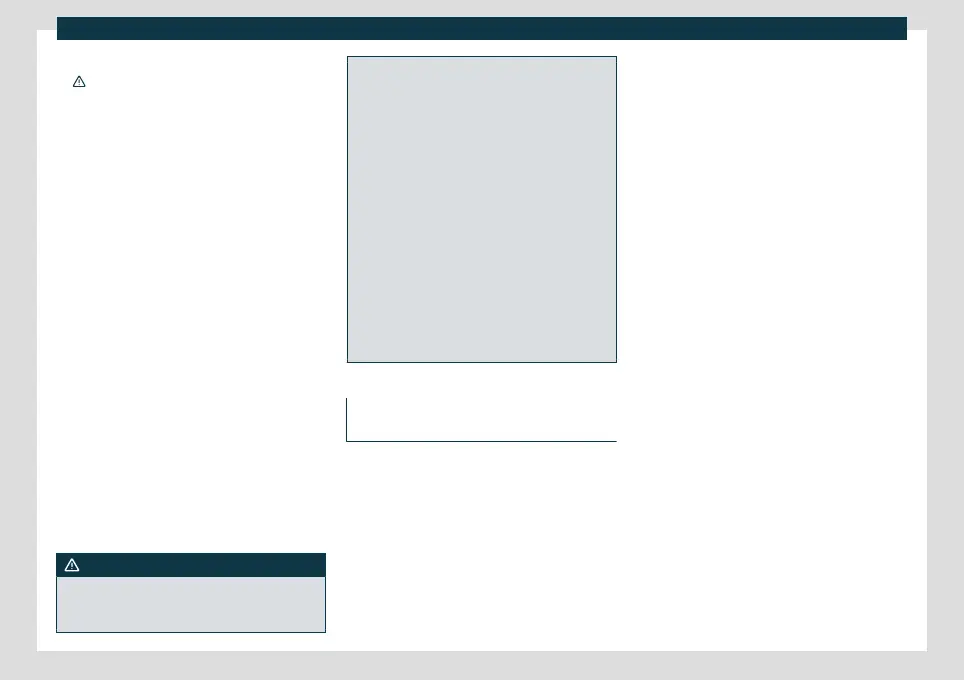Driving
important to observe certain safety points
›
›
›
.
Wint
er t
yres
Thanks to four-wheel drive, your vehicle will
have plenty of traction in winter conditions,
even with the standard tyres. Nevertheless,
we still recommend that winter tyres or all-
season tyres be fitted on all four wheels to
give even better braking response.
Snow chains
On roads where snow chains are mandatory,
this also applies to cars with four-wheel drive
›››
page 341.
Changing tyres
On vehicles with four-wheel drive, all four
tyres must have the same rolling circumfer-
ence. Also avoid using tyres with varying
tread depths
›››
page 336 .
Off-roader?
Your CUPRA vehicle is not an off-roader: it
does not have enough ground clearance to
be used as such. Avoid consequently rough
tracks and uneven terrain.
WARNING
●
Even with four-wheel drive, you should
always adjust your speed to suit the condi-
tions. Do not let the extra safety features
tempt you into taking any risks when driv-
ing. Accident hazard!
●
The br
aking capability of your vehicle is
limited by the tyres' grip. It is therefore no
different from a car without four-wheel
drive. So do not be tempted to drive too
fast on firm or slippery roads just because
the vehicle still has good acceleration in
these conditions. Accident hazard!
●
On wet roads bear in mind that the front
wheels may start to “aquaplane” and lose
contact with the road if the car is driven too
fast. If this should happen, there will be no
sudden increase in engine speed to warn
the driver, as occurs with a front-wheel
drive car. For this reason you should always
choose a driving speed suitable for the road
conditions. Accident hazard!
Economical and environmentally
friendly driving
Fuel consumption, environmental pollution
and w
e
ar to the engine, brakes and tyres all
depend largely on driving style. Consump-
tion can be reduced between 10-15% with
an efficient driving type. The following sec-
tion gives you some tips on lessening the im-
pact on the environment and reducing your
operating costs at the same time.
Active cylinder management (ACT®)*
Depending on vehicle equipment, the active
cylinder management (ACT®) may deacti-
vate some of the engine cylinders if the driv-
ing situation does not require too much
power. The number of active cylinders can
be seen on the instrument panel display.
›››
page 67.
Foresight when driving
If you think ahead when driving, you will
need to brake less and thus accelerate less.
Take advantage of the inertia of the vehicle
whenever possible, with a gear engaged.
This takes advantage of the engine braking
effect, reducing wear on the brakes and
tyres. Emissions and fuel consumption will
drop to zero.
Changing gear to save energy
An effective way of saving is to change in ad-
vance to a higher gear.
Manual gearbox: change from first to sec-
ond gear as soon as possible. Choosing the
correct gear saves fuel. Select the highest
possible gear suitable for the driving situa-
tion (the engine should continue to run with
cyclical regularity).
Automatic transmission: accelerate gradu-
ally and without reaching the “kick-down”
position.
228

